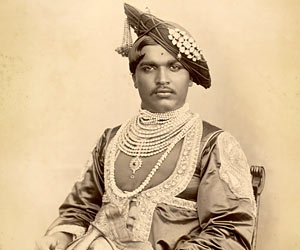Read about the life history of Kolhapur Maharaj
Shahu Chhatrapati, who was also a great reformer in this biography.
Shahu Chhatrapati

Born - 26 June 1874
Died - 1922
Achievements - Shahu is also known to have done a lot for the
upliftment of the poor and the down trodden. He tried his level best to
make education and jobs available to all those living in his domain. He
also passed laws to allow the training of non-Brahmin men as temple
priests.
Shahu Chhatrapati was the Maharaja or the king of the Indian princely
state of Kolhapur. Also known by the name of Rajarshi Shahu, he was
known to be a great social reformer of his time. Shahu Chhatrapati was
born on 26 June in the year 1874 as Yeshwantrao Ghatge. He was the
eldest son of Appasaheb Ghatge, who was the head of Kagal and his wife
Radhabai, who was the daughter of the Raja of Mudhol that's in today's
Karnataka state. Read on the biography of Shahu Chhatrapati.
When Shahu Chhatrapati was a child, he was adopted by Anandibai, who was the
widow of Maharaja Shivaji IV of Kolhapur in the year 1884. The following
generations saw a lot of marriages taking place between the members of
these two families. This caused Shahu's family to remain closely
associated with the ruling dynasty of Kolhapur. This also helped in
securing Shahu Chhatrapati's place on the throne despite his not being a
male-line member of the Bhonsle dynasty.
Another important point came in the life history of Shahu Chhatrapati
in 1891, when he married Lakshmibai, the daughter of a Maratha nobleman
from Baroda. And together they gave birth to four children. Shahu is
also known to have done a lot for the upliftment of the poor and the
down trodden. Shahu Chhatrapati tried his level best to make education
and jobs available to all those living in his domain.
He not only made acquiring education less expensive, but also gave free
education to all and got many hostels built within the precincts of
Kolhapur. By promising proper employment to the students, Shahu
Chhatrapati devised one of the earliest affirmative programs. And many
of these plans were executed in the year 1902. Among other changes made
by Shahu Chhatrapati for social reform was training the non-Brahmin men
as temple priests.
This particular modification went against the social norms as it is
still reserved for only those belonging from the Brahmin sect to become
priests in India. For this Shahu even faced solid opposition from many,
but remained steadfast. However, this reform too got vanished once Shahu
passed away. To honour Shahu's contribution to the society, the Indian
postal department issued a stamp dedicated to him.

